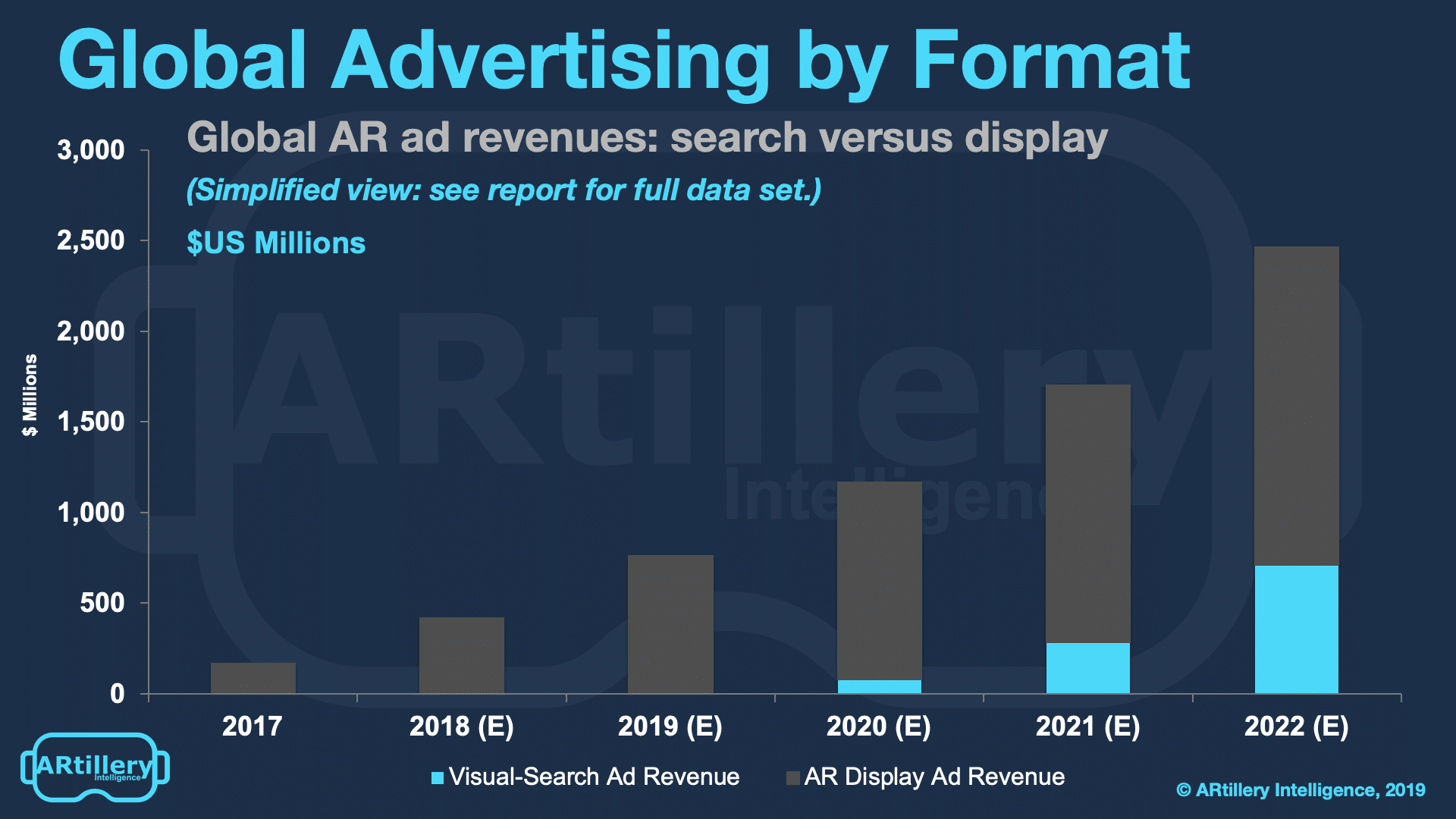
This post features a recorded presentation (slides & voiceover). It examines the recent AR predictions of our research arm, ARtillery Intelligence. Embedded video and narrative analysis are included below. The full library of slides, reports and multimedia can be accessed at ARtillery PRO.
2018 was an up and down a year for spatial computing. We learned a lot as market signals indicated a softer market than previously expected. So what are the biggest learnings? And what’s the outlook for 2019? We tackle these in a recent report and presentation (embedded below).
First, we learned that Mobile AR is scalable in its installed base of almost a billion smartphones, but active users are more like 129 million. So it needs more time in the oven including the tech itself, developers’ native footing, and consumer acclimation — all of which go together.

Bright Spots
But we’re also seeing bright spots. Pokemon Go* has made more than $2 billion in in-app purchases which is the business model we believe will be dominant in AR. It draws from an established mobile gaming revenue model, consumer comfort levels and unit economics.
But what everyone’s waiting for is a killer app for truly world-immersive AR, and we believe that could come in 2020 which is about three years after the launch of ARkit. This a historically validated timeframe for killer apps, such as the 2-3 year window after the iPhone 1.
What will that be? We believe it’ll likely be a communications, social or utility-oriented experience, all of which have the greatest potential stickiness and frequency of use. Utilities are a mundane use case but could prove sticky, and we’re bullish on things like Google Lens.
(*Is Pokemon Go AR? we examined both sides in a recent article)

Building Blocks
The AR cloud also came into the collective consciousness in 2018. The realization emerged that we need a cloud data resource to feed AR devices with spatial mapping data object recognition blueprints, and other AR enabling resources. And several AR cloud startups launched.
Another key concept that emerged was AR as a service (ARaaS). This will provide AR cloud functionality, architecture and other capabilities developers — thus lowering some of the barriers to AR. The first example to emerge last year was Niantic’s Real World platform.
Along those lines, one of our 2019 predictions is that a breakout category of AR will be enabling technologies like this. It also includes building blocks and creative tools like Sketchfab, Adobe Aero, Amazon Sumerian and anything that democratizes AR creation and distribution.

Follow the Money
Another important realization in 2018 is that AR advertising is actually working. It’s currently one of the few places being monetized in AR, with just over $400 million spent in 2018. That’s mostly been branded AR lenses in Snapchat and Facebook. We project it to grow to $760 million in ’19.
The appeal to advertisers is strong brand engagement, due to the immersiveness of things like trying on cosmetics. And it’s going beyond brand awareness to drive actual conversions given transactional functionality that’s baked in. This makes it a rare full-funnel ad medium.
We believe that going forward the AR ad mix will shift from social lenses to visual search, such as Google Lens. Currently, the latter is a bit behind in monetization, due to its complexity. But we believe the high-intent use case, just like search, will be a strong revenue driver in a few years.

AR at Work
Enterprise AR is a sleeping giant. It’s showing demonstrable ROI in areas like industrial productivity and error reduction. But there’s still a lot of inertia and risk aversion as it gets stuck in “pilot purgatory.” The resistance is mostly from IT departments and job-insecure employees.
That resistance will be slowly eroded by continued ROI proof points, but the tipping point won’t come until 2020. The good news that it will then accelerate in a sort of enterprise herd mentality, and that’s the same thing we saw a decade ago with enterprise smartphone adoption.
Those are just a few of our takeaways and predictions. You can see more in the full report and video below. That includes a deep dive on VR (the fifth prediction), and the outlook for accelerants like the competitively-priced Oculus Go and Quest in 2019. It will be an action-packed year.
Boiling it down: 5 Predictions
1. Mobile AR: 2020 killer app emerges
2. AR Cloud and “building blocks” will be AR’s lynchpin.
3: AR ads break out as leading revenue category
4. Enterprise AR: 2020 tipping point
5. 2019 VR rebound led by standalones
For deeper XR data and intelligence, join ARtillery PRO and subscribe to the free AR Insider Weekly newsletter.
Disclosure: AR Insider has no financial stake in the companies mentioned in this post, nor received payment for its production. Disclosure and ethics policy can be seen here.
